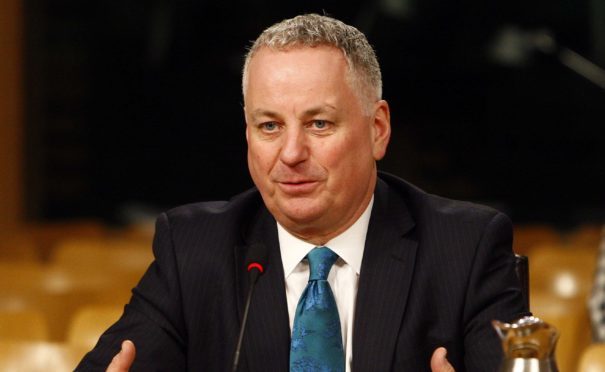Sir, – I read your article “Sarwar favourite to lead Scottish Labour” (Courier, January 16) with some interest.
It quoted Lord Jack McConnell, the man who started the slide by losing the 2007 election but who now seems like a Titan compared to those that followed.
Lord McConnell feels this latest round of Labour navel gazing presents a “huge opportunity” to challenge the “extreme”nationalism of the SNP and “extreme” unionism of the Conservatives.
Labour in Scotland has many problems, not least that they have not only turned their face against independence – against the wishes of a large part of their own voter base – but against the very idea of Scots even having a say.
Voters in Scotland have many choices. If you want ultimate devolution, then vote SNP; less devolution, the Tories will be your choice; and the status quo would be Lib Dem territory.
Currently the Tories, Labour and Lib Dems are splitting the minority position of “no to independence”.
Quite how Labour envisages a resurrection in that scenario has not been explained.
But the fact that a quarter of their current Holyrood group has led the party on either a permanent or temporary basis shows that they can shoot all the messengers they want but it is the message that is the problem.
Hopefully, that might give them pause for thought.
Henry Malcolm.
Clepington Road,
Dundee.
Vaccine supply fears hindering roll-out
Sir, – Jake Keith’s article with Angus Council leader David Fairweather (Military help with jabs urged by council leader, Courier, January 16) is more than a little concerning.
Yes, the vaccine programme is behind schedule, the reasons for which were not explained in the piece, but calling on the troops at RM Condor may not be the answer.
As has been stated several times by the Scottish Government, there is physical capacity to vaccinate more people per day, but it was not explained that a recent JVCI decision to change the deployment from two doses three weeks apart to two doses 12 weeks apart releases extra doses that were set aside, increasing the capacity.
Confidence in the supply of vaccine is at the heart of the slow start.
The full contingent of the 500,000 vaccine doses should have arrived by January 31, so it is difficult, if not impossible to have 500,000 people vaccinated on that date.
Why is there secrecy on a commercial contract, which we pay for?
Alistair Ballantyne.
Birkhill,
Angus.
Imaginary borders a bar to independence
Sir, – In modern times the peoples of the British Isles have learned to live together, and to put conflict behind them.
However, to some, borders still seem to exist.
The whole concept of Scottish nationalism serves no real purpose within the UK; it merely attempts to undermine what is a modern democracy in an ever-changing world.
Whether the zealots of the SNP will admit it or not, there is no easy route for an “independent” Scotland to leave the UK, and to become a member of the EU.
Firstly, how would the powers that be at Holyrood cope with the problems they would face with “the border”, which they have created in their own minds at Gretna; also to the north of Berwick-upon-Tweed, and elsewhere in the Southern Uplands.
And another frontier even more daunting for them, now that the UK is no longer in the EU, would be the English Channel.
Would it be unkind to point out to Sturgeon that she simply cannot just have her cake and eat it?
In any case, the Scottish Government simply has not got the strength in its economy to support its policies or ambitions.
The GERS figures relating to the Scottish economy do not make good reading, and are highly unlikely to improve any under this SNP administration.
Change will inevitably occur in Scotland, as indeed it will in all parts of the UK, but it should not be allowed to follow the pattern prescribed by the separatist.
Robert I G Scott.
Northfield, Ceres,
Fife.










